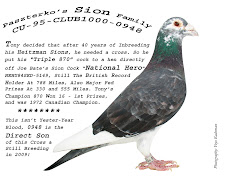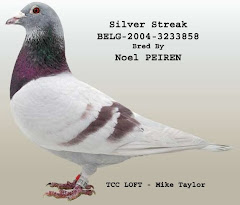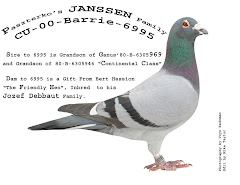Discovery News
By Michael Reilly
Wed Sep 2, 2009
Pigeons manipulate the shape of their wings when spooked so they emit a unique whistle during take-off.
Crested pigeons, as the one shown here, emit an audible whistle from their wings whenever they fly, and are known to beat faster and harder when taking off in fear. iStockPhoto
Startled pigeons give off a shrill, rattling whistle when they take flight that signals the flock to scatter, according to a new study.
But it doesn't come from their mouths; a specially-evolved wing feather seems to be the noise-maker, vibrating to sound the alarm.
In urban parks and city squares the world over pigeons humbly peck away at the ground, wobble up to passersby in search of handouts, and generally make a nuisance of themselves. For decades, they've also jealously guarded a mystery of science: how does a flock of perhaps hundreds of pigeons flee simultaneously?
Mae Hingee and Robert Magrath of the Australian National University in Canberra have found the answer hiding in the wings of Crested Pigeons (Ocyphaps lophotes). The foot-long birds emit an audible whistle from their wings whenever they fly, and are known to beat faster and harder when taking off in fear.
Magrath and Hingee recorded the sound of the birds flying happily around a feeder, then sent in a decoy of a hawk, and recorded their flight from the faux predator.
When the researchers later played the sound back for a flock of birds, they didn't so much as twitch at the normal recording. But the rapid clap-clap-clap of the alarmed bird sent them fleeing. Similarly, when the volume or speed of the recording was manipulated, birds only reacted to emergency wing whistles.
"Alarmed take-off whistles were louder and had a faster tempo than routine take-offs," Magrath said. "The sound of the whistle -- probably including the tempo -- is the key feature letting others know whether the bird that took off was alarmed, not how loud it is."
Their findings were published today in the journal Proceedings of the Royal Academy B.
Without high-speed cameras to take footage of fleeing birds' wings, it's hard to say exactly how they produce the whistle. But one of the primary feathers on each wing is much narrower than the rest, like a reed. Magrath suspects the feather vibrates to make the high-pitched sound, and the clapping comes when it clangs against adjacent feathers.
Crested Pigeons are only common in Australia, but Seth Coleman of Gonzaga University believes wing whistles could be an important means of communication for a host of other species.
"Whistles seem to be ubiquitous among the pigeon and dove family," he said. "All birds have feathers, and all flying birds make some sort of noise when they fly. It's an enormous evolutionary opportunity to be able to co-opt that for communication."
Their discovery could also one day be useful as a repellent in areas where birds are unwelcome guests, such as park statues or airports.
Read more ...















